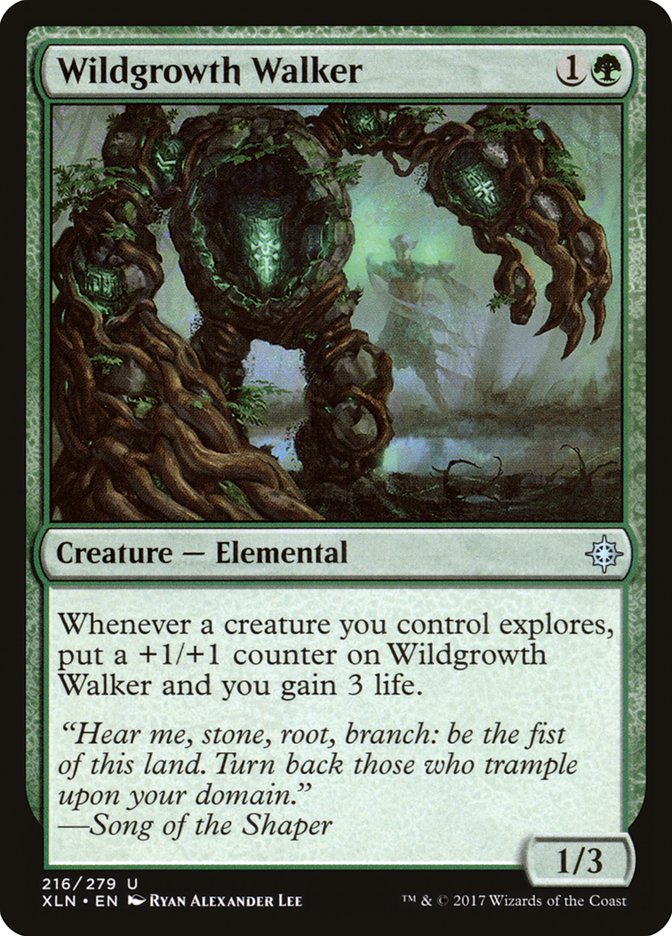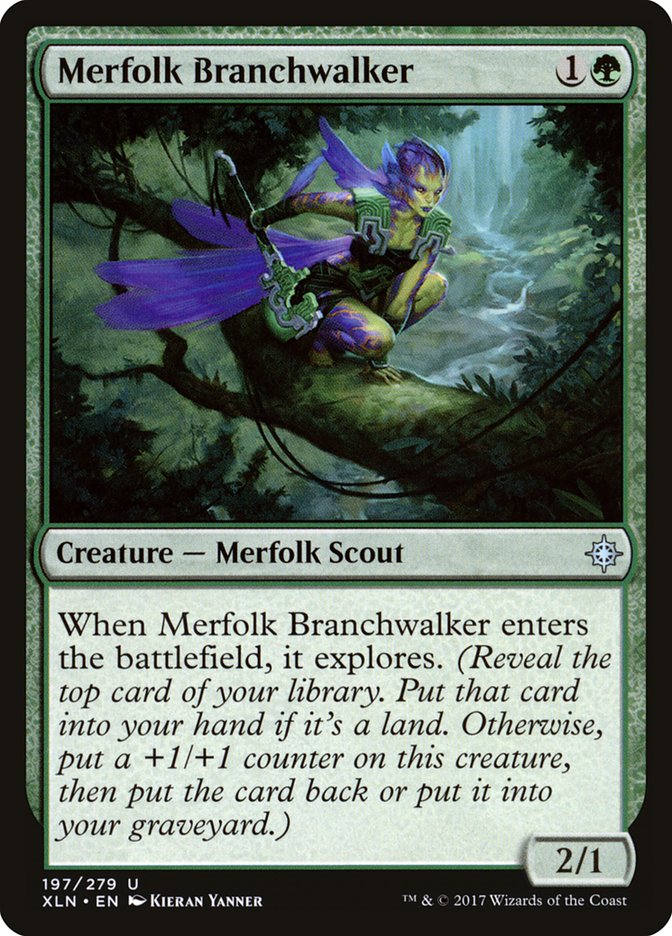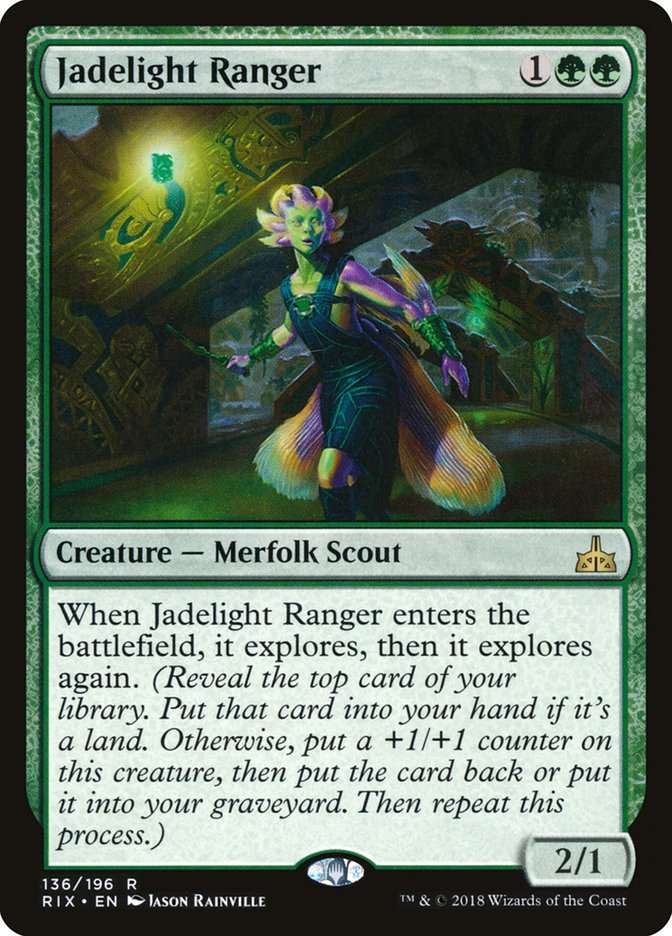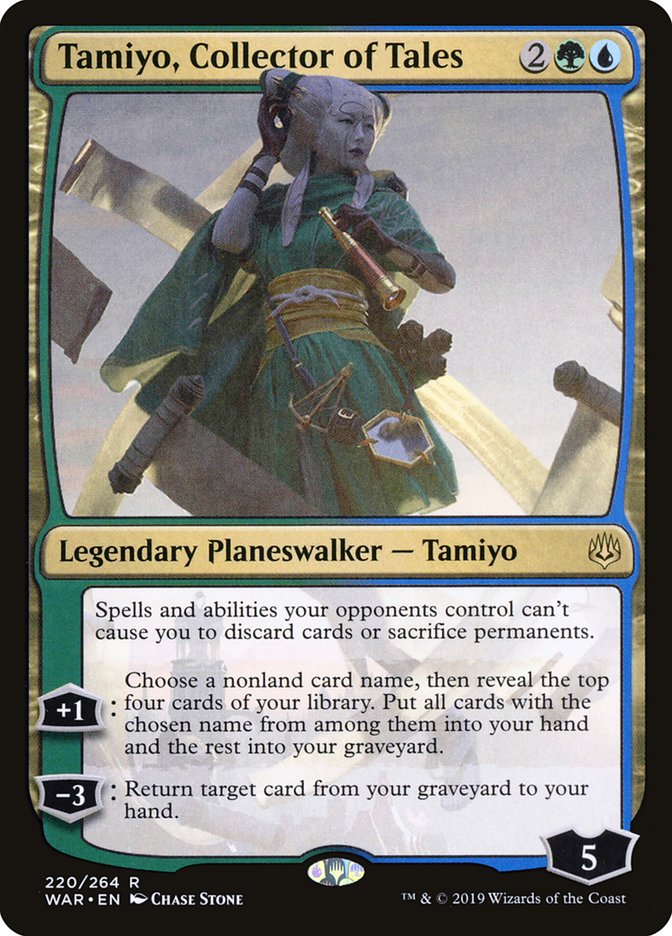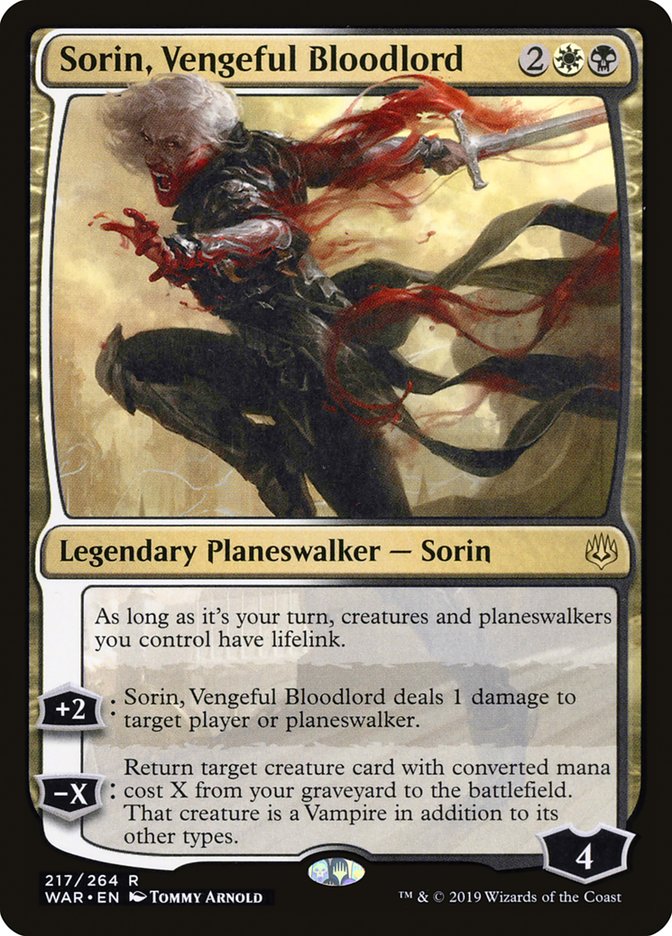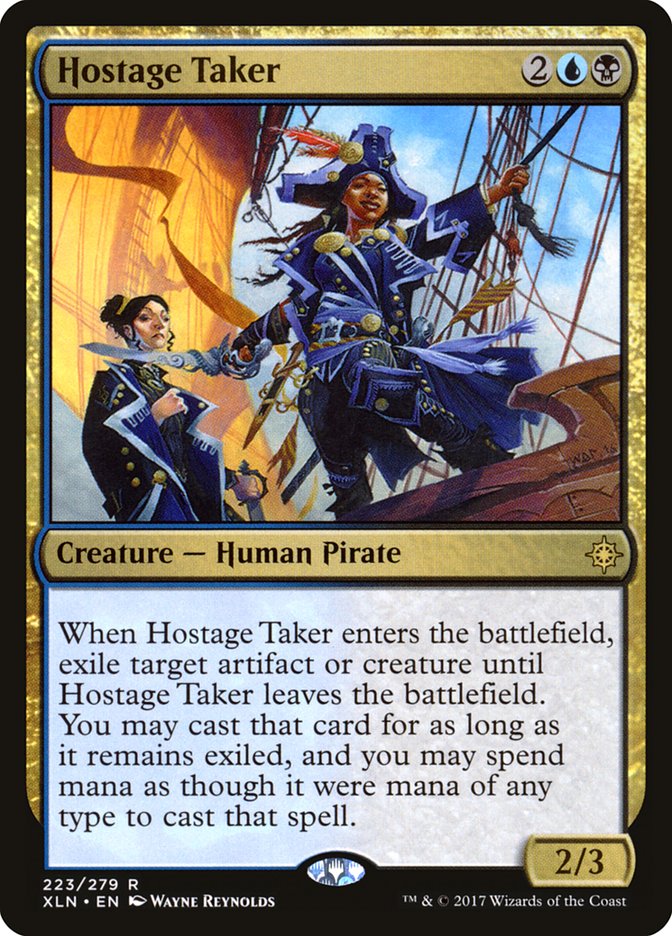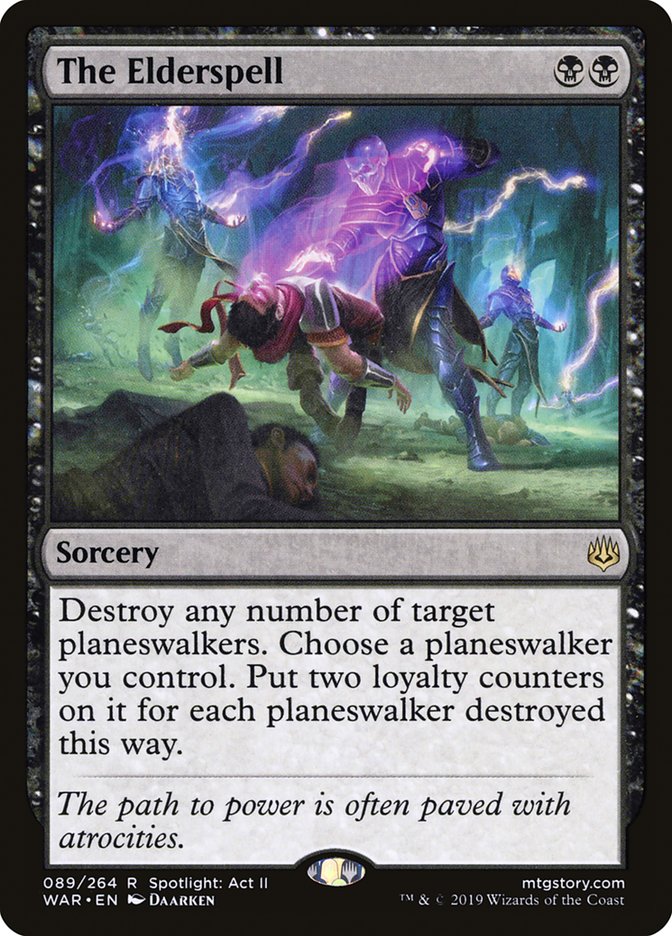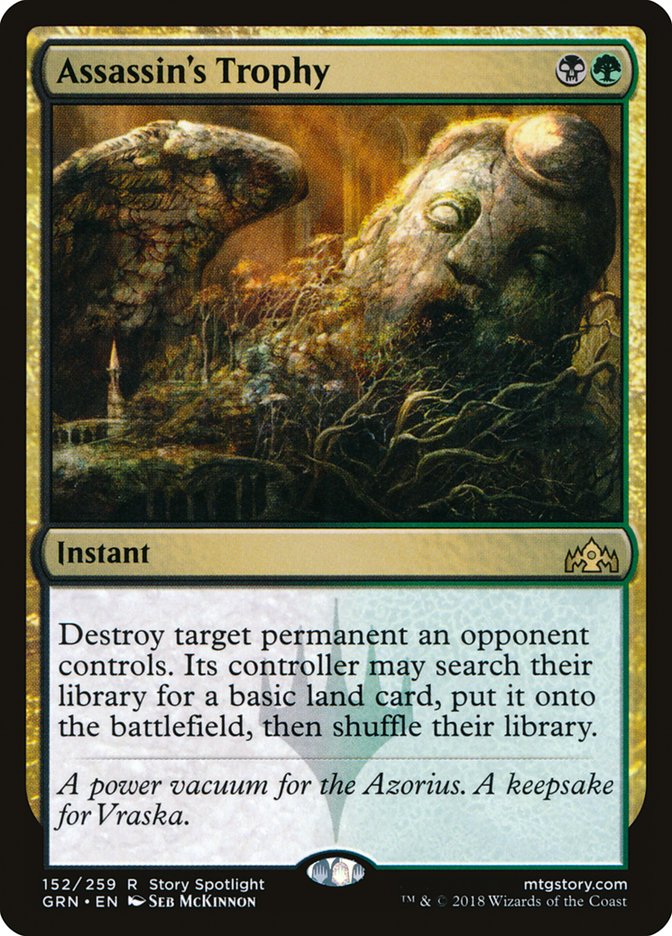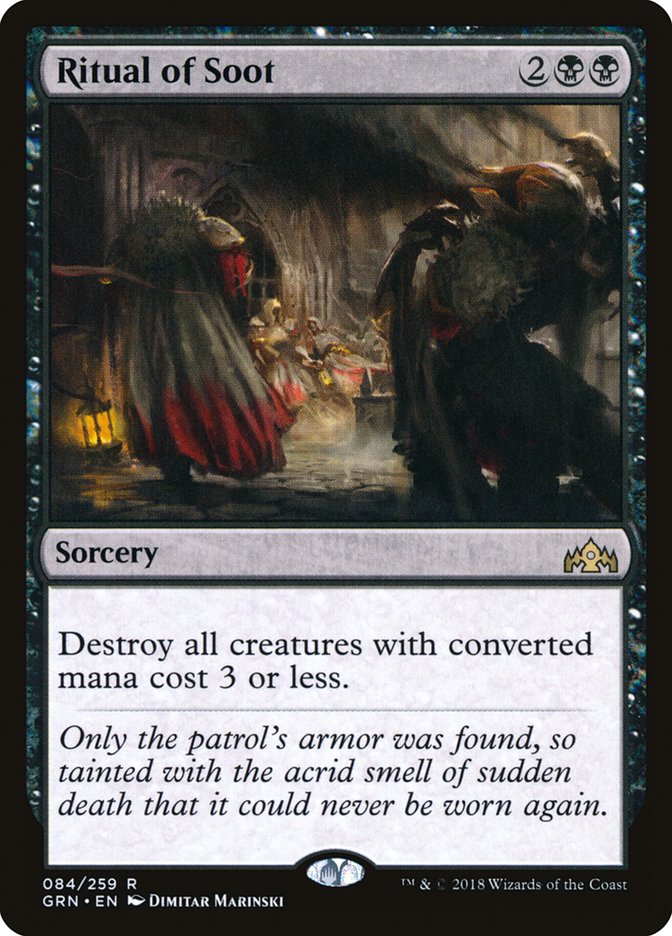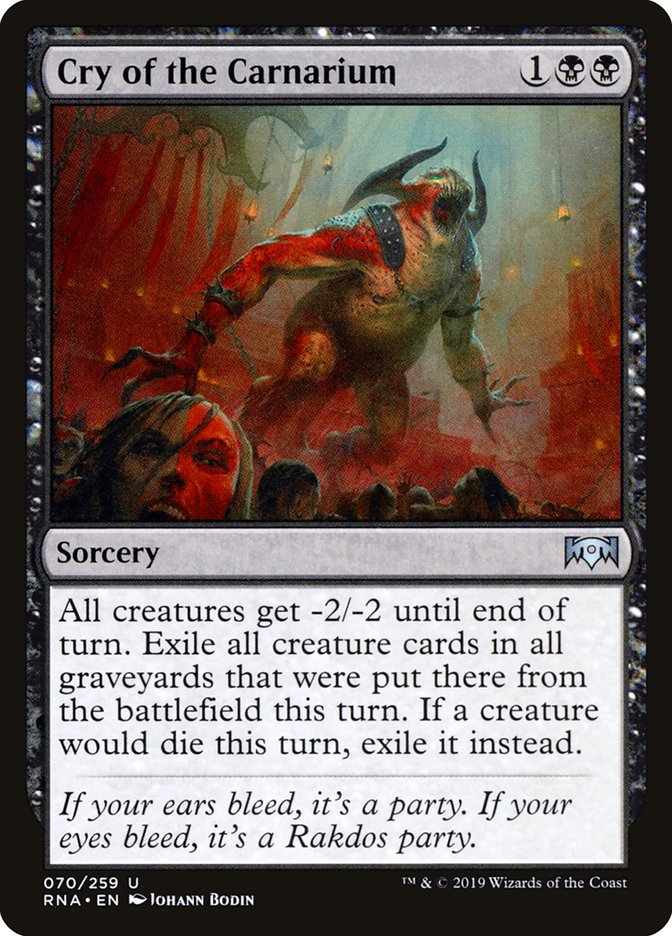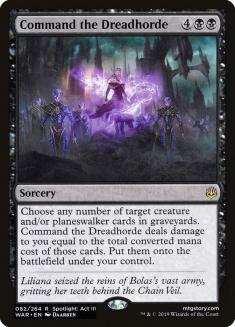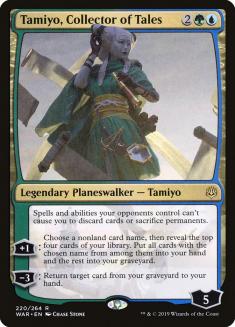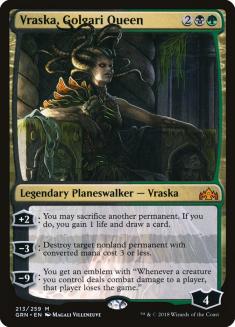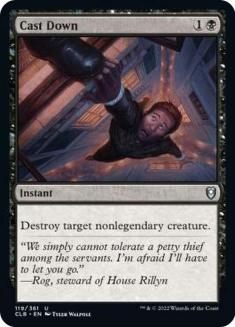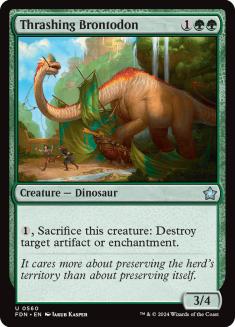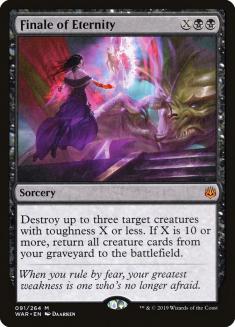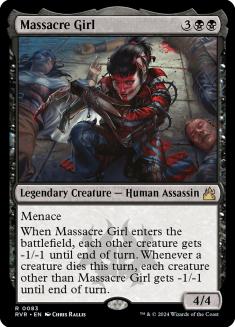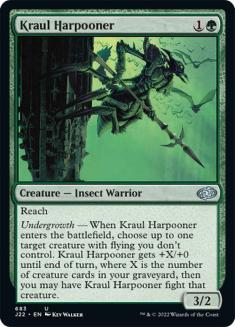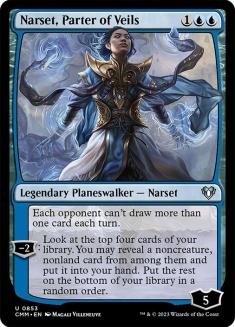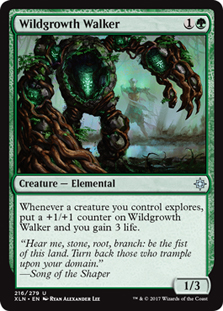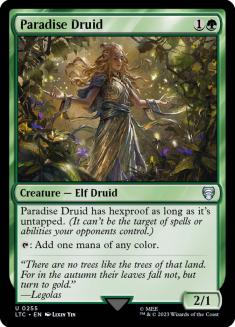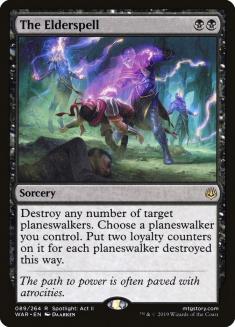Standard is moving at an almost unprecedented pace since the release of War of the Spark. With so many powerful cards and viable strategies swapping spots on the top of the metagame heap, keeping pace is a herculean task. Today I’ll break down what I believe to be the current best choice – Four-Color Dreadhorde.
To begin, here is my current list.
Creatures (17)
Planeswalkers (13)
- 2 Teferi, Hero of Dominaria
- 3 Vraska, Golgari Queen
- 4 Teferi, Time Raveler
- 4 Tamiyo, Collector of Tales
Lands (26)
Spells (4)

The core of the deck is Wildgrowth Walker, Merfolk Branchwalker, and Jadelight Ranger. These three have been fighting aggro and smoothing draws for some time now, but in this deck, they reach new heights. It’s safe to say this list is capable of winning games without casting Command the Dreadhorde, but when creatures that are already so powerful both fuel your win condition and dig for your key card, things get crazy. They also play exceptionally well with a resolved Command the Dreadhorde, instantly ballooning your life total and effectively removing all intended downsides of the card.
One notably absent card from the list above is Llanowar Elves, which has frequently been a partner in crime with the explorers. Here, though, it’s been replaced with Paradise Druid. The first reason for this swap is the constraints of a four-color manabase. Lands like Interplanar Beacon cut into your pool of Turn 1 green sources to cast a timely Elves, and those increased color requirements also appreciate the rainbow fixing from the Druid. Further, hexproof shines in the current Standard metagame, as having a two-drop that cannot be bounced by an opposing Teferi, Time Raveler is huge.
Next up is the planeswalker package, which is carried by Tamiyo, Collector of Tales. Her +1 is almost always naming Command the Dreadhorde, and this allows you to find the deck’s namesake card more often while also fueling your graveyard so it can have a wealth of valuable targets by Turn 6. What makes this strategy so crushingly powerful against other midrange decks is how Tamiyo can be returned with the Command and immediately -3 to add the Command back to your hand. This type of sequence is eerily reminiscent of how Rally the Ancestors would play: grind out value and keep your head above water until your namesake card buries your opponent.
Teferi, Time Raveler has already made a gigantic impact on Standard, and while I was initially skeptical of stretching the mana to include him, it’s worth the cost. Shutting down what few counterspells still see play allows you the room to maneuver to resolve your six-mana sorcery, and having the Repulse effect is worthwhile to keep the battlefield as clear as possible in the early-game. Reanimating Teferi alongside Wildgrowth Walker with Command the Dreadhorde to guarantee that your creature is not killed before any life is gained gives you the ability to fire off another large Command. The other Teferi – Teferi, Hero of Dominaria – is here as more of a value card, and importantly gives us the ability to tag planeswalkers that cost four or more mana without depending on the combat step.
The final maindeck card I’d like to cover is Vraska, Golgari Queen. Her stock has grown in lockstep with the rising popularity of three-mana planeswalkers, but that’s only part of the utility provided here. The sacrifice from her +1 is an excellent way to place key permanents in the graveyard before casting Command, and in a deck with 26 lands, having another outlet for flood insurance is welcome.
Other Options
Jim Davis ran two copies of Sorin, Vengeful Bloodlord at SCG Syracuse and I’ve played enough hours with the card in to formulate an opinion on its inclusion. Ultimately, I’ve found that you mostly want it as a trump card against aggressive decks and right now I’m not running into enough of them to be sold on Sorin.
Hostage Taker is another option that has always excelled against Azorius Aggro and that I thought would be strong against the midrange swath of the format. Unfortunately, I’ve found that Teferi, Time Raveler can make it difficult to both steal and keep a creature, and he’s simply too prevalent in the decks that used to be the weakest against Hostage Taker.
The Elderspell and Assassin’s Trophy can both provide additional maindeck interaction with planeswalkers, and if you choose to run them, it’ll be a question of upside versus consistency. Vraska, Golgari Queen and Teferi, Hero of Dominaria have game-winning ultimates should you be able to dump additional loyalty on them, but Trophy will always be castable and sometimes to very good effect when your opponents skimp on basic lands.
I’ve played with Ritual of Soot and Cry of the Carnarium in my sideboard, but both are edged out by Finale of Eternity for now. The downside of killing your own creatures has felt like too much of an issue for me, especially against Mono-Red Aggro, when you need to maintain enough of a battlefield to close the game before you get burned out.
Sideboarding
VS Mono-Red Aggro
Out:
In:
Mono-Red Aggro isn’t a matchup I love to play, but you’re not without tools to win the game. You’ll want to sideboard into a bit of a traditional Sultai-style deck and fight the red menace in all the regular ways. That means stuff like trying not to cast Wildgrowth Walker until you can cast an explore creature in the same turn and trying to close aggressively when you’re lacking an answer to Experimental Frenzy.
VS Izzet Phoenix
Out:
In:
I hate this matchup. You simply lack the tools to deal with fliers – especially ones resilient to removal – and have to count on your opponent stumbling to have a great chance. Still, the priority is to protect your Wildgrowth Walker with Duress and beat down with your explore package while your opponent spins their wheels.
VS Esper Midrange
Out:
In:
I’ve found this matchup to be favorable if you can block a few common lines of play. Letting Thief of Sanity hit you is a potential death sentence, as they can steal a Command the Dreadhorde and completely flip the game in their favor. The other sequence that I’ve lost to most often is the Turn 7 Teferi, Hero of Dominaria plus The Elderspell for an immediate ultimate. Duress comes in to make this sequence difficult, but it’s important to keep the minimum number of planeswalkers on the battlefield at any time to play around this.
VS Jeskai SuperFriends
Out:
In:
In the absence of Sarkhan the Masterless, I’ve liked this matchup. Vraska is an all-star at containing your opponent’s planeswalkers, and you also pack The Elderspell as a huge trump. That being said, Spell Pierce and Shock can seriously stifle your development at times, so you’ll need a keen eye when sequencing. Typically, I prefer playing casting into open mana, as a Shock on an explore creature can still grant you some value.
VS Azorius Aggro
Out:
In:
I’ve found this matchup to be similar to Mono-Red Aggro, but generally more favorable for the Command player. Teferi, Time Raveler having a wealth of tokens to bounce for value helps, as well as Massacre Girl being an almost unbeatable card. The Azorius deck is playing on the ground like you are, so if you can contain your opponent’s pump effects, the explorers can hold down the fort long enough for you to take over.
VS Four-Color Dreadhorde
Out:
In:
Very little matters in the mirror match besides doing everything you can to cast Command the Dreadhorde first or using Duress to deny it from your opponent. When you can get to six mana first, be aggressive with your creatures, as trades will favor you when the battlefield comes back under your control, and if you opponent takes all the damage, you diminish their ability to use Command. Teferi stays in over Vraska because oftentimes it’s better to bounce a creature and buy time than put it into the graveyard, though this could change on the play or draw.
Command the Dreadhorde is an incredibly exciting card, and if Standard continues to be a midrange arms race, I think it’ll be the linchpin of the best deck. With four colors, there is a wealth of cards to potentially include, and I’m looking forward to continuing to iterate and tune in the near future.


